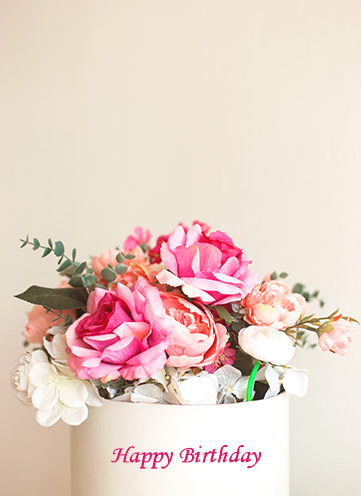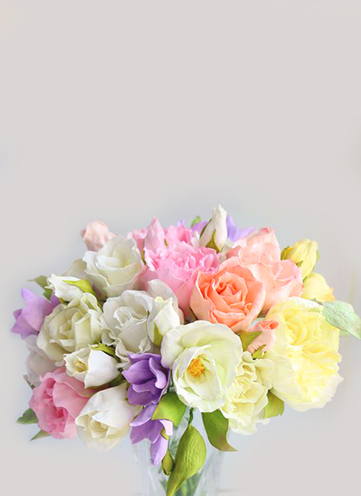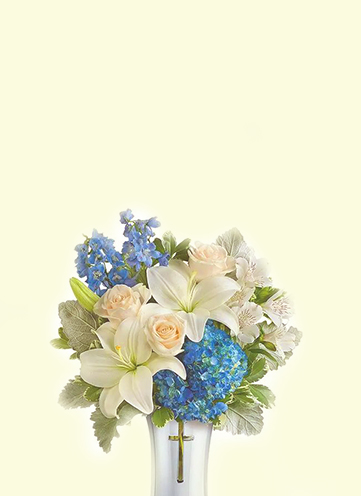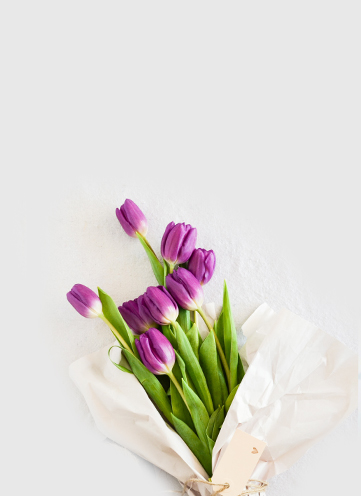Hydrangea Maintenance: Tips for Gorgeous Blossoms
Posted on 22/08/2025
Hydrangea Maintenance: Tips for Gorgeous Blossoms
If you dream of captivating, vibrant blooms in your garden, caring for hydrangeas the right way is a must. These stunning flowering shrubs are beloved for their lush, bountiful clusters of blossoms that brighten up any outdoor space. But to get those show-stopping flowers, hydrangea maintenance is essential. In this extensive guide, we'll cover everything you need to know about hydrangea care so you can enjoy gorgeous hydrangea blooms season after season.
Understanding Hydrangeas: A Brief Overview
Hydrangeas are a diverse genus of flowering plants treasured for their ability to produce impressive, showy blossoms. Native to Asia and the Americas, there are over 75 species of hydrangeas, with a variety of shapes, colors, and sizes. Popular types include Hydrangea macrophylla (Bigleaf), Hydrangea paniculata (Panicle), Hydrangea arborescens (Smooth), and Hydrangea quercifolia (Oakleaf).
- Hydrangea macrophylla: Known for their round, mophead blooms, usually in hues of blue, pink, or purple.
- Hydrangea paniculata: Panicle-shaped blooms, often white turning pinkish as they age, highly hardy and easy to maintain.
- Hydrangea arborescens: Native to North America, with dome-shaped, often white flowers.
- Hydrangea quercifolia: Oakleaf-shaped leaves and cone-like flower clusters, known for their autumn foliage.
Understanding your hydrangea type is crucial for proper maintenance, as care requirements can vary between varieties. Proper hydrangea care will reward you with spectacular blossoms that can enhance your landscape year after year.

Choosing the Right Location for Your Hydrangeas
Successful hydrangea maintenance begins with selecting the right spot for your plants. These shrubs thrive in different light and soil conditions depending on their species. Here's what to consider:
Light Requirements
- Most hydrangeas prefer partial shade, especially in hotter climates. Morning sun with afternoon shade is ideal.
- Panicle and smooth hydrangeas tolerate more sun and can handle full to partial sunlight.
- Bigleaf and oakleaf hydrangeas may develop scorched leaves and fewer flowers if exposed to too much direct sun.
Soil Conditions
- Moist, well-draining soil is essential for healthy hydrangea shrubs.
- Hydrangeas prefer soil that is rich in organic matter.
- Heavy clay soils should be amended with compost to improve drainage.
Tip: Test your soil's pH--hydrangea blossoms' color in some species, like Bigleaf, depends on the soil's acidity!
How to Plant Hydrangeas for Successful Blossoms
When it comes to hydrangea maintenance tips, proper planting sets the foundation for a healthy, long-lasting plant. Keep these steps in mind:
- Plant in Spring or Fall: Plant new hydrangeas after the last frost in spring or in early autumn. This allows roots to establish before extremes of summer heat or winter freeze.
- Dig the Right Hole: The hole should be two to three times wider than the root ball but only as deep as the root system.
- Loosen Roots: Gently tease out any circling roots to encourage outward growth.
- Set at Correct Depth: Keep the crown of the plant at ground level.
- Backfill and Water In: Replace soil, firm it gently around roots, and water deeply after planting.
- Mulch Well: Apply a two- to three-inch layer of mulch to conserve moisture, suppress weeds, and regulate temperature.
Watering Hydrangeas: Essential for Gorgeous Blooms
Consistent moisture is key to achieving lush hydrangea blossoms.
- Hydrangeas love water but require well-draining soil--avoid soggy roots.
- Water deeply one to two times per week, providing at least 1 inch of water each time.
- During hot, dry weather, increase watering frequency.
- Morning watering is best to minimize disease risk and allow leaves to dry before nightfall.
- Mulch helps retain soil moisture and keeps roots cool.
Pro Tip: Hydrangea wilt is a sign of drought stress--if leaves droop in the morning, increase watering immediately!
Fertilizing Hydrangeas for Stunning Blossoms
Proper fertilization is a vital part of hydrangea maintenance. Over-fertilizing encourages leaf growth at the expense of flowers, while under-fertilizing can stunt both leaves and blooms.
When & How to Fertilize
- Feed hydrangeas once in spring as new growth emerges, and again in early summer if needed.
- Use a balanced slow-release fertilizer (e.g., 10-10-10) or one specially formulated for shrubs and flowering plants.
- Avoid applying fertilizer after July, as late feeding can encourage tender new growth susceptible to winter damage.
Soil Amendments for Bloom Color
With certain varieties, soil pH affects blossom color:
- To turn flowers blue, apply elemental sulfur or aluminum sulfate to lower soil pH (more acidic).
- To turn flowers pink, apply garden lime to raise soil pH (more alkaline).
- Test soil annually to monitor and fine-tune amendments for your desired hydrangea color.
Pruning Hydrangeas: Supporting Health and Blossoms
Learning when and how to prune hydrangea bushes is crucial for both plant vigor and abundant blooms. The right pruning technique depends on your hydrangea species.
Know Your Hydrangea Type
- Old wood bloomers (e.g., Bigleaf, Oakleaf): Bloom on stems grown the previous season. Prune immediately after flowering to avoid cutting off next year's buds.
- New wood bloomers (e.g., Panicle, Smooth): Bloom on current year's growth. Prune in late winter or early spring before new growth appears.
General Pruning Guidelines
- Remove dead or damaged stems at any time.
- Cut off spent blooms (deadheading) to tidy up and encourage more flowering.
- Thin out crowded stems to improve air flow.
- For mature, overgrown plants, rejuvenation pruning can renew vigor but may sacrifice blooms for one season.
Never prune more than one-third of the shrub in a single year to maintain healthy structure and ongoing blossoms.
Managing Pests and Diseases for Healthy Hydrangeas
Hydrangeas are generally robust, but they can occasionally fall prey to pests or diseases which hinder blossom beauty. Hydrangea care includes regular inspection and prompt action if problems arise.
Common Pests
- Aphids: Tiny, sap-sucking insects that cluster on new growth. Blast with water or treat with insecticidal soap.
- Spider mites: Speckled leaves and fine webbing--usually a sign of dry, dusty conditions. Spray with water and improve air circulation.
- Leaf tiers and caterpillars: Handpick or use appropriate insecticides if populations become severe.
Common Hydrangea Diseases
- Powdery mildew: White, powdery coating on leaves--improve air flow and use fungicides if needed.
- Leaf spot: Brown or purple spots--remove affected leaves and avoid overhead watering.
- Root rot: Caused by overly wet soils--ensure proper drainage.
Healthy hydrangeas are more resistant to problems, so prioritize cultural care to keep plants stress-free and vigorous.
Winter Protection for Hydrangeas
While many hydrangea types are hardy, some varieties, especially Bigleaf, benefit from winter protection to ensure optimal blooming come spring and summer.
- Mulch heavily (4-6 inches) around the base after the first frost to insulate roots.
- For less-hardy varieties, consider wrapping shrubs in burlap or using wire cages filled with leaves for added protection.
- In areas with unpredictable thaws, shield plants from repeated freezing and thawing, which can damage buds.
Remove winter coverings in early spring once frosts have passed so new growth isn't smothered.
Hydrangea Maintenance Through the Seasons
For truly gorgeous hydrangea blossoms, tailor your maintenance routines to the seasons:
Spring
- Remove dead stems and tidy up mulch.
- Fertilize just as new growth appears.
- Prune new wood bloomers before shoots grow.
- Check for emerging pests and diseases.
Summer
- Maintain regular, deep watering--especially during hot, dry spells.
- Deadhead as flowers fade to encourage re-blooming.
- Monitor for any pest or disease issues.
Fall
- Allow flower heads to remain for winter interest or cut for dried arrangements.
- Clean up fallen leaves to reduce disease risk.
- Apply fresh mulch for root insulation.
- Avoid fertilizing late in the season.
Winter
- Protect vulnerable varieties with mulch or coverings.
- Avoid disturbance--pruning only if needed for damage control.
Long-Term Hydrangea Maintenance and Troubleshooting
Consistent hydrangea care pays off with resilient plants and prolific, show-stopping blossoms. Here's how to handle common hydrangea problems:
Why Aren't My Hydrangeas Blooming?
- Incorrect pruning--cutting old wood bloomers at the wrong time destroys flowering buds.
- Winter damage--bud loss due to freezing temperatures.
- Excessive shade--insufficient light can reduce blooming.
- Over-fertilization--too much nitrogen boosts leaves, not flowers.
Leaves Turning Yellow or Brown?
- Watering issues--check for overly wet or dry soil.
- Poor drainage--hydrangea roots dislike standing water.
- Nutrient deficiency--feed with balanced fertilizer and amend soil as needed.
- Fungal diseases--remove affected leaves and ensure good air flow.
Floppy Stems and Drooping Blooms?
- Hydrangeas often have large flower heads--support stems with garden stakes if needed.
- Thin out weak stems regularly during pruning to promote stronger growth.
Changing Hydrangea Bloom Color
- For Bigleaf hydrangeas, experiment with soil amendments to achieve your favorite blossom hue.
- Patience is required! Color changes may take a full season to take effect.

Creative Uses for Hydrangeas in Your Garden
Hydrangeas aren't just for borders! With the right care for hydrangeas, you can use them in a variety of landscape settings:
- As hedges or privacy screens thanks to their dense foliage and dramatic height.
- In mixed perennial beds to provide season-long color and structure.
- As foundation plantings for shade, flower beds, and home entryways.
- Cut flowers for brilliant bouquets and dried arrangements--hydrangeas' blooms last long both fresh and preserved.
Combine different hydrangea types to stagger bloom times and create varied colors and shapes for a truly dynamic garden.
Conclusion: Your Path to Breathtaking Hydrangeas
Hydrangea maintenance doesn't have to be complicated. By understanding your shrub's needs and following the essential tips outlined above--choosing the right location, providing consistent watering and fertilizer, proper pruning, and year-round maintenance--you'll be rewarded with stunning hydrangea blossoms that are the envy of the neighborhood. Take time to enjoy their beauty, experiment with colors, and let your hydrangeas shine as a highlight of your garden for years to come!
With just a bit of care and attention, your hydrangeas will thank you with a magnificent display--not just this season, but for many seasons ahead.
Latest Posts
Spotlight on [LANDMARK] Weddings: Perfect Flowers for Your Big Day
A Guide to Flower-Friendly Outdoor Spaces in [AREA] (SW6, NW1 & More)
Hydrangea Maintenance: Tips for Gorgeous Blossoms





